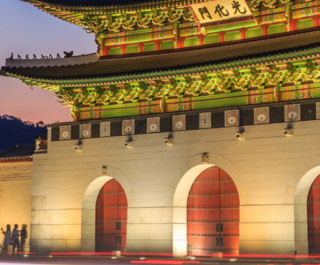
We are outside a cafe, watching people as they trot down the inclined street before us. It is Monday – a spring public holiday – and the sky is powder blue.
A breeze rustles the leaves of the trees that line the street. We drink strong coffee in china cups. A woman in a chiffon dress walks by with a small dog. Then the street falls still.
For all this Euro-chic, we are not in Paris or Berlin. We are outside Common Ground, a cafe in Hong Kong's Sai Ying Pun district – just a stone's throw from the city's jutting skyscrapers.
A recent extension to the MTR Island Line, now servicing the area, has opened up a new westward frontier for residents seeking affordable rents – and new businesses to cater for them.
For those in the know, Sai Ying Pun and next-door Sheung Wan have long provided an oasis of calm within reach of Hong Kong's hectic centre. The artisan coffee we are drinking hints at the nature of the change that is under way.
PoHo arrives in an echo of SoHo
Those who've been here since the beginning bookend the change to the opening of a restaurant called Yardbird in 2011, serving up every imaginable part of chicken – heart, liver and gizzard – on sizzling yakitori skewers, along with the classic cuts. It introduced Hong Kong to the 'no reservations' dining style that was taking cities across the world by storm.
A flurry of top-notch eating and drinking options – such as the Ping Pong Gineteria, a G&T drinking den – quickly followed suit. Around the same time, cafes, art galleries and boutiques began to spring up around Po Hing Fong Street. Borrowing from nearby SoHo, this tranquil corner quickly became known as PoHo.
 Hollywood Road in Sheung Wan (images: Getty)
Hollywood Road in Sheung Wan (images: Getty)
Of course, the word 'gentrification' has a chequered reputation. The new cafes, wine bars, and restaurants largely make little concession to local vernacular and, in some cases, replace long-standing local businesses.
But Hong Kong more than most has benefited from the introduction of democratic, mid-range dining. Pre-Yardbird, the best eating options largely fell into two camps: local street food and fine dining priced with the city's bankers in mind. Now – just a short subway ride from Central – lies an affordable taste of a new Hong Kong.
Ovolo Hotels recently opened serviced apartments in next-door NoHo (North of Hollywood Street), that follow the same bold design principles as its five city-wide hotels. The rooms pack an awful lot into a small space: a double bed, shower-room, desk, wardrobe and Apple TV.
Craft beers you have to try in Hong Kong. 3 Must-Drink Local Beers In Hong Kong
Meet Ho Lee Fook's masterchef. Interview With Chef Jowett Yu Of Hong Kong’s Modern Ho Lee Fook Restaurant
Don't miss the pun in that name
Prices start at a reasonable $HK1,287 ($A220) for a double, which includes free coffee, drinks and snacks in the hotel's Lo Lounge. With no breakfast options on offer, head out in the morning when you get peckish.
Ho Lee Fook opened last summer, offering contemporary versions of Cantonese classics. The excellent food – the short ribs are highly recommended – is served in a lively dining room that blends the character of old local tea restaurants (known as cha chaan tengs) with the cool of a late-night hangout in New York City's Chinatown, circa 1960.
And don't overlook the pun in the name.
 The city that never sleeps - where you can still find havens of individuality
The city that never sleeps - where you can still find havens of individuality
For a more traditional bite, head to Lin Heung Ku for a dim sum breakfast. The staff don't speak much English but are friendly and happy to help – and you won't find a more authentic experience than dining with locals before the working day starts.
Once upon a time, an internationally renowned burlesque dancer by the name of Mrs Pound disappeared, rumoured to have fallen in love with a wealthy Hong Kong gentleman who hid her in a stamp shop. Or so the (fictional) story behind Mrs Pound goes.
Local businesses survive the chain store tidal wave
This speakeasy comes with a stonkingly good cocktail list – and the barmen will go off-piste to suit your palate. That's if you can find the concealed button to open the front door.
If speakeasys are your thing, XXX is worth a visit if the night looks set to be a long one. Here, behind a battered basement door on Wing Lok street lies one of the city's best sound systems.
And Oolaa on Bridges Street is the place to see and be seen. It's open from early until late, so start the night here or head over for brunch the morning after.
Sheung Wan is home to two major shopping destinations. Last year, the PMQ complex opened its doors, offering retail and studio space to small Hong Kong businesses and craftspeople in a converted police barracks (the initials stand for Police Married Quarters).
 Lanterns light the way in a Sheung Wan temple
Lanterns light the way in a Sheung Wan temple
Down the road, Western Market is housed in one of the neighbourhood's oldest structures – originally opened in 1906, it now offers fabric shops, crafts and food, over two storeys.
Despite the recent hipsterfication, Sai Ying Pun is still broadly unchanged. Local businesses have not been washed away by the chains which dominate further east.
Wander down Koh Shing Street where Chinese medicine is made and sold, and then on to Dried Seafood Street where all manner of piscine ingredients – traditionally dried on the roofs above – are to be found. Be prepared for the heady aroma.
Marvel at the shops selling paper gifts for the dead – everything from iPhones to sports cars – to be burned at ancestors' temples. And remember, this city never sleeps – exploring after dark with a meandering walk home is most rewarding.
Visit your local Flight Centre store or call 131 600 for more advice and the latest deals on travelling to Hong Kong.
Oscar Quine flew with Virgin Atlantic from Heathrow.
This article was written by Oscar Quine from The Independent and was legally licensed through the NewsCred publisher network.










